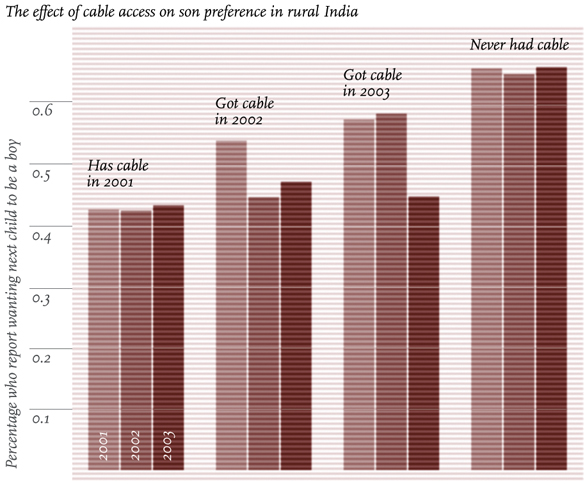Remote control
By Lydialyle Gibson
Graphic by Allen Carroll

Cable-television access has risen rapidly in India. In 2006, 61 percent of the 112 million households with a TV also had cable or a satelliteódouble the figure from five years earlier. India is not alone; around the globe, more people are watching TV, which exposes them to the outside world and experiences unlike their own. The effect on attitudes in poor, rural villages is striking, says Chicago Booth economist Emily Oster.
Analyzing survey data on rural Indian women in the August Quarterly Journal of Economics, Oster found cable-influenced opinion shifts on wife-beating, female autonomy, and son preference. In villages without cable, as many as 67 percent of women wanted their next child to be a boy. In other villages, cable access coincided with a marked drop in son preference.
